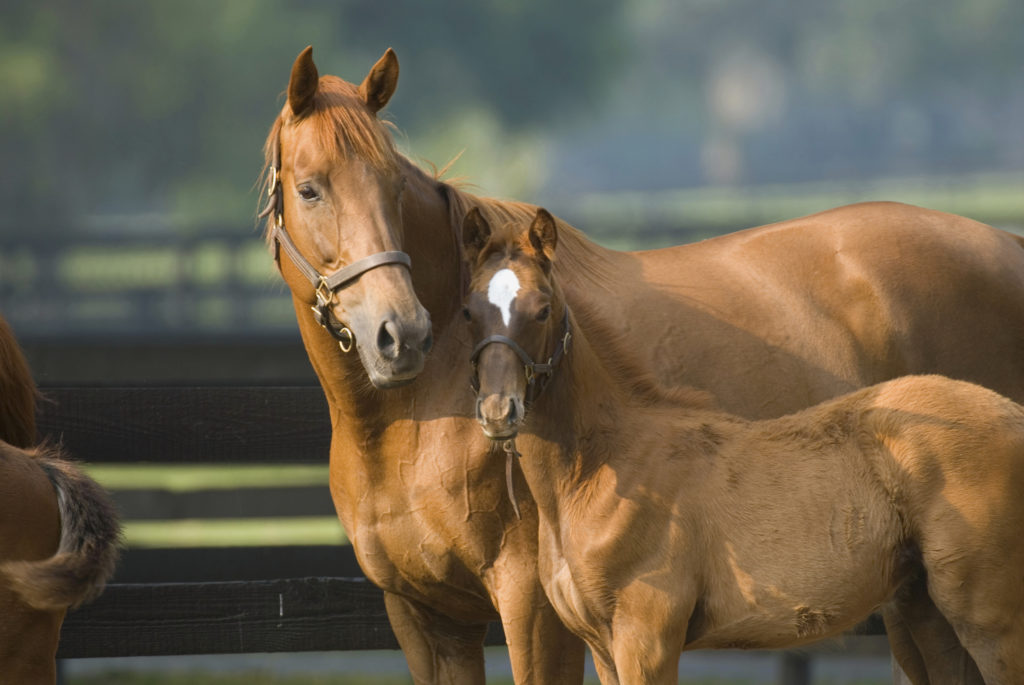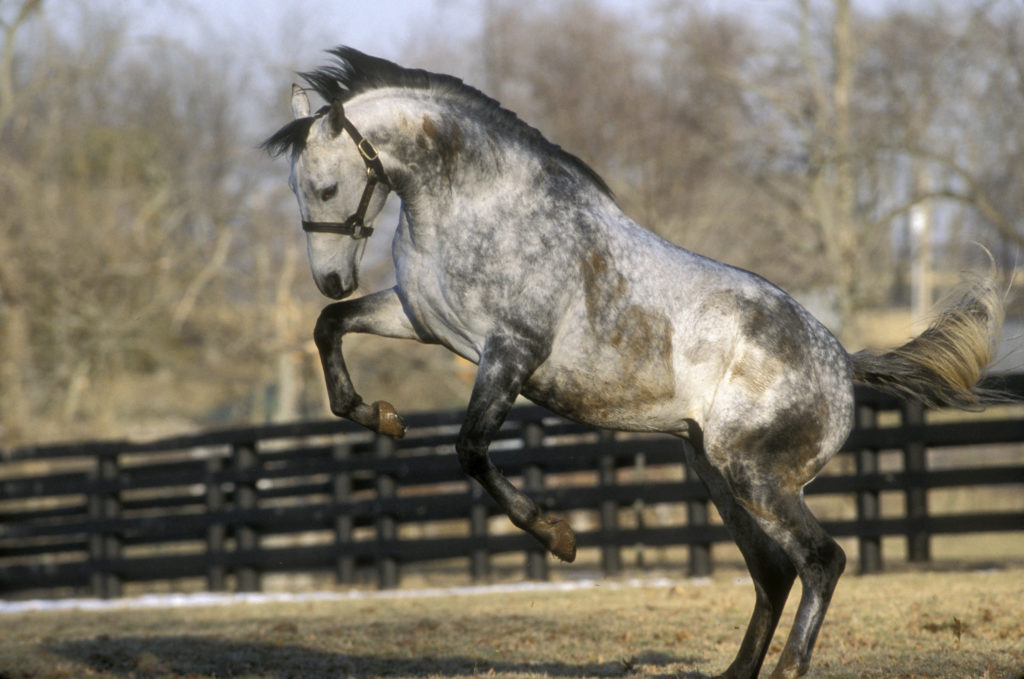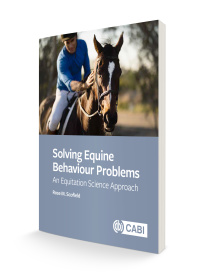
There once was a process of breaking horses that involved force, domination and control – indeed the word ‘breaking’ was not coined for any other reason than to represent the fact that the horse’s spirit must essentially be broken to ensure a complaint and willing beast of burden. Over the years the process of breaking a young horse to ride in the UK still demanded compliance, but perhaps with a greater sense of companionship and the building of a relationship between horse and human. The societies leading change included the British Horse Society and the Association of British Riding Schools began programmes of education for horse handlers and riders, based on traditional aims and ideas but still retaining some aspects of control and submission.
The welfare of horses almost definitely improved under these programmes progressing through the 20th century and handing down knowledge of husbandry and riding skills to generations of pony club kids. Much of this knowledge filtered through to the USA, where horse training was changing to use English saddles and dressage tests. These were advocated as a kinder way of dealing with horses than methods used by the old Western riding communities who still practised complete dominance (McLean, 2003).
Then suddenly a new technique was being talked about, influenced in the most part by an ex-cowboy called Monty Roberts in the USA, who came to England and showed the Queen a novel method of breaking horses that did not involve long drawn out processes but took place in minutes in a very small, circular-fenced arena (Daily Express, 2019). Consequently, thanks to the Queen’s support, people involved with horses were amazed, and the notion of ‘natural horsemanship’ was born.
Horses were no longer our servants, but our partners, and were taught we were the dominant leader in the relationship and must remain as such. Many different systems of horse training under the umbrella of natural horsemanship were invented, all involving anecdotal evidence of the horse’s natural behaviour and how humans could manipulate it to make them behave towards us in a safer, more understanding way. Humans became the new stallions of the herd, whatever the horse really thought. Many of these new practitioners launched huge businesses making vast profits, providing services for horse owners to regain that ‘natural’ relationship with their horses which, they said, had been lost through the old, traditional ways.

But something was happening – owners began to report behavioural problems with their horses that had not been seen before, and injuries were reported to rise when natural horsemanship methods were employed. Those gadgets linked to these methods such as treeless saddles, controlling headcollars and bitless bridles began to be reported in research as having adverse effects on the horses subjected to them (Belock et al. 2012; Ijichi et al. 2018; Scofield and Randle 2013). Who were these researchers in the background working tirelessly and pretty much anonymously? They were the equitation scientists, desperate to explore ethology (the study of animal behaviour in their natural environment) with scientific measuring of ridden horses’ welfare (Christensen et al. 2006; McGreevy 2007; McLean 2008; Goodwin et al. 2009). The small community of those adopted equine scientists who wanted to look deeper into the horse-human relationship grew exponentially, researching the effects of these methods (Rhodin et al. 2005), of gadgets (Walker et al. 2013), and applying learning theory to the training of horses where it had been so successful with dogs and zoo animals (McGreevy and McLean 2010).
A new way, maybe a third way, is now apparent – learning theory matched with some traditional training methods and the impetus of the good in natural horsemanship in the relationship between horse and human. No longer is the horse the slave and servant of the human, as in traditional methods but neither is the human the leader and punisher of the horse, as developed in natural horsemanship. The horse, I feel, may have at last found its rightful place alongside humans; treated as a sentient being, with its own natural agenda, but trained carefully through the tenets of learning theory to never be punished, but to be encouraged to use its own learning and memory capabilities to the advantage of both horse and human.

Solving Equine Behaviour Problems: An Equitation Science Approach, by Rose M Scofield, is available now from the CABI Bookshop
Further reading
Belock, I.B., Kaiser, J., Lavagnino, M. and Clayton, H.M. (2012). Comparison of pressure distribution under a conventional saddle and a treeless saddle at sitting trot. The Veterinary Journal 193(1), 87-91.
Christensen, J.W., Rundgren, M. and Olsson, K. (2006). Training methods for horses: habituation to a frightening stimulus. Equine Veterinary Journal 38(5), 439-43.
Daily Express (2019). Royal Inspiration: how Queen’s surprise move ‘brought Queen Mother to tears’. Available at: https://www.express.co.uk/news/royal/1177169/queen-elizabeth-ii-news-queen-mother-royal-family-horse-whisperer-tears-spt [Accessed 24.08.20].
Goodwin, D., McGreevy, P., Waran, N. and McLean, A., 2009. How equitation science can elucidate and refine horsemanship techniques. Veterinary Journal 181(1) 5-11.
Ijichi, C., Tunstall, S., Putt, E. and Squibb, K. (2018). Dually noted : the effects of a pressure hedcollar on compliance, discomfort and stress in horses during handling. Applied Animal Behaviour 205, 68-73.
McGreevy, P.D. (2007). The advent of equitation science. Veterinary Journal 174(3), 492-500.
McLean, A.N. and McGreevy, P.D. (2010). Horse training techniques that may defy the principles of learning theory and compromise welfare. Journal of Animal Behaviour 5, 187-195.
McLean, A. (2003). The Truth About Horses; a guide to understanding and training your horse. Barrons, New York.
McLean, A.N. (2008). Overshadowing: a silver lining to a dark cloud in horse training. Journal of Applied Animal Welfare Science 11(3), 236-48.
Rhodin, M., Johnston, C., Holm, K.R., Wennerstrand, J. and Drevemo, S. (2005). The influence of head and neck position on kinematics of the back in riding horses at the walk and trot. Equine Veterinary Journal 37, 7-11.
Scofield, R.M. and Randle, H. (2013). Preliminary comparison of behaviors exhibited by horses ridden in bitted and bitless bridles. Journal of Veterinary Behaviour: Clinical Applications and Research 8(2), 20-21.
Walker, V.A., Dyson, S.J. and Murray, R.C. (2013). Effect of a Pessoa® training aid on temporal, linear and angular variables of the working trot. Veterinary Journal 198(2), 404-11.
1 Comment
Leave a Reply

A great read, thanks for posting. The internet is such a wonderful tool for finding information on horses.